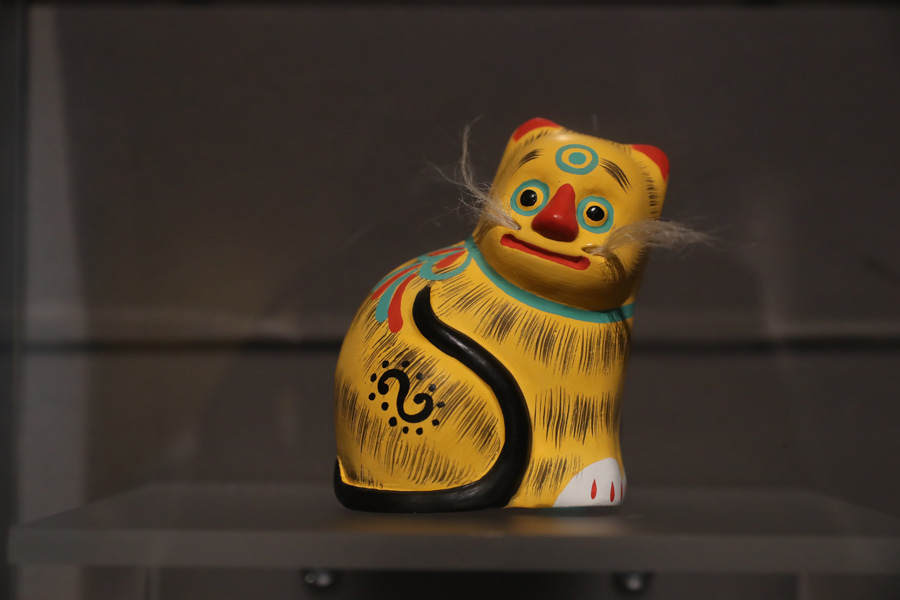 |
|
A cat sculpture is displayed. [Photo by JIANG DONG/CHINA DAILY] |
Some believe Sun Bin, a strategist living during the Warring States Period (475-221 BC), was the first person to use the smooth, fine black clay in Huishan to sculpt. Sun was framed by his rival and accused of treason, left crippled by his punishment, before escaping to Huishan where he made a living by sculpting the clay figurines, while helping to spread the craft.
The trade of clay sculptures in Huishan reached its height in the mid-to-late Qing Dynasty (1644-1911), and many workshops prospered. Craftsmen also looked after ancestral temples, or worked on farms.
Two types of clay sculptures were popular: one was children's toys, often called shuahuo (goods for play) or cuhuo (rough products), because they were simply made, and were usually models of cats, buffaloes and Afu, a chubby, joyful baby who often holds in its arms an animal of auspicious implications, such as a fish. The other was opera characters called xihuo (refined products), as they required more sophisticated techniques to manufacture and contained vibrant colors. They normally catered to rich families looking for decorations during festive occasions.